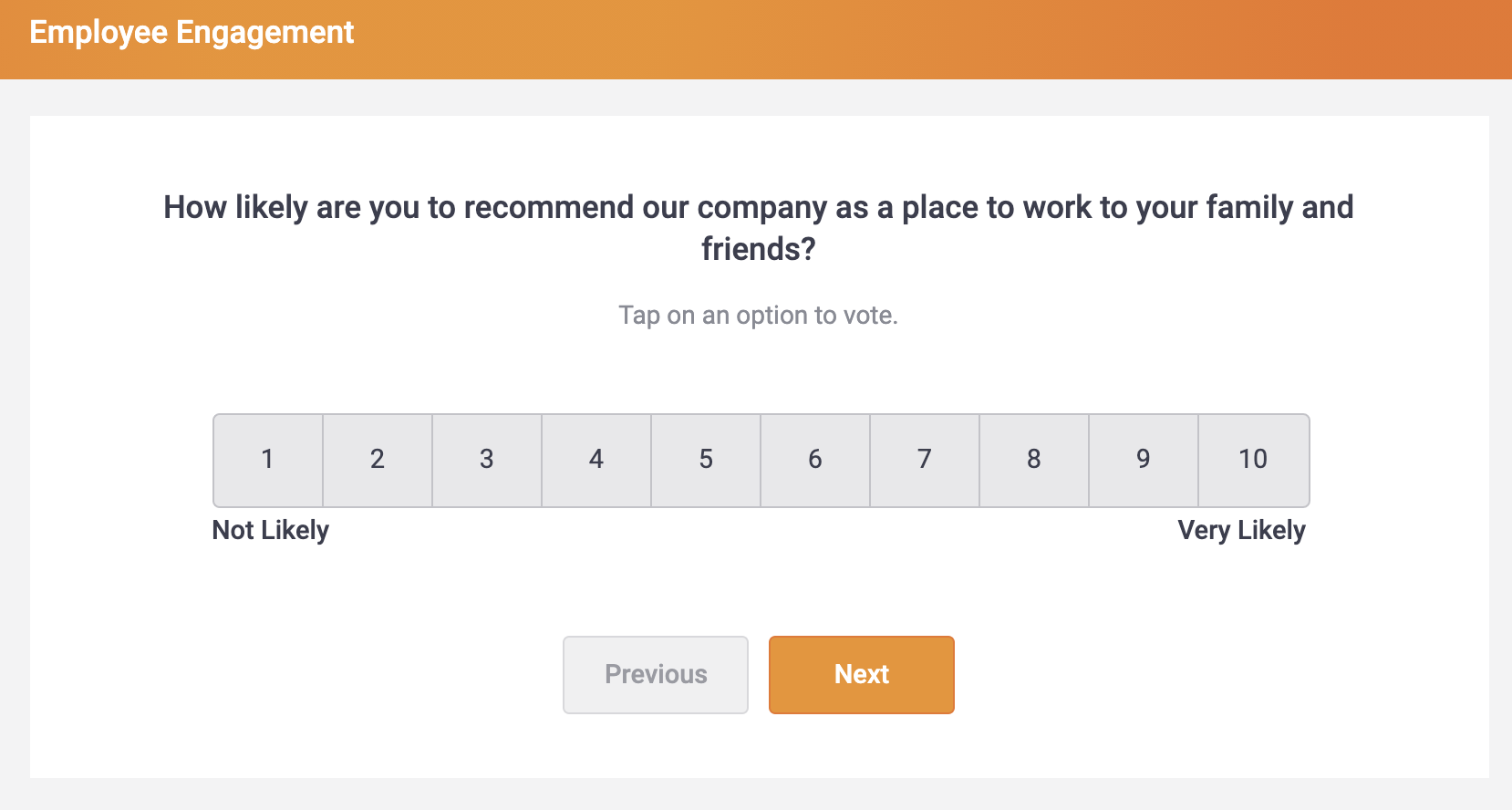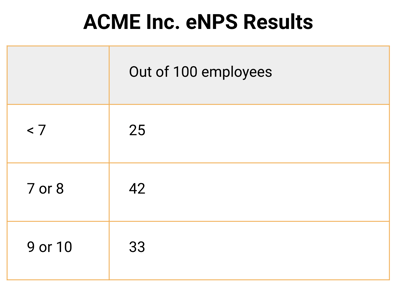Customer satisfaction has long been the main measure of a company's image and success. And while that is important, many companies are coming around to the importance of employee satisfaction.
After all, an employee who loves working for you and is passionate about the company’s mission is an invaluable and productive asset to your company. Long term employees are not only cost effective, they also serve as solid knowledge bases, and invaluable support systems.
To keep these invaluable employees, it is imperative that employee satisfactions be kept at an optimal level. To track employee’s engagement regularly, eNPS is a simple yet effective trick. Here’s how to use it.
What is eNPS?
The Net Promoter Score (NPS) is a measurement technique trademarked by Bain & Company, Satmetrix Systems, Inc., and Fred Reichheld in 2003 . NPS organises your customers into three groups to gauge customer loyalty. All you have to do is ask customers one simple question: “On a scale of 1 to 10, how likely are you to recommend our product to your family and friends?”
As companies start to realise the importance of employee satisfaction, they have adopted the NPS to measure employee engagement instead, changing the original statement to suit its purpose and naming it employee net promoter score (eNPS).
So to track your employee engagement with eNPS, simply ask them the question:
“On a scale of 1 to 10, how likely are you to recommend our company as a place to work to your family and friends?”
Conducting your eNPS survey

Firstly, you will have to consider your company culture and choose the best mode of communication for your company. Go for what makes the most sense and would get the best response from your employees. You may also choose to employ a third party website to help design, build and deploy your eNPS survey through whatever mediums you choose.
Since it is an automated process, your HR department can efficiently evaluate and organize your results and continue tracking your eNPS over time to view your progress. The HR department can even choose to send them directly to regional or departmental management so they may view their performance in comparison to their counterparts.
As for what to include in your eNPS survey, asking them how likely they would be to recommend the company as a place to work should be followed by an opportunity for employees to provide an open-ended answer to truly be effective. These are some examples:
- “What are the primary reasons for your rating?”
- “What might we do as a company to improve your score?”
The numerical rating coupled together with the longer form feedback will be a goldmine of insights for your company.
Calculating your eNPS score
Your eNPS score should show you the difference between your happiest, and least happy employees. Based on the score they give you, your employees will be split into 3 different groups.
- Those who give a score of 6 and below are detractors - these are the ones most likely to speak negatively about the company.
- Employees who rated the company a 7 or 8 are passives,
- and those who give scores 9 or 10 are the promoters - the most likely to recommend the company to others.
Since your eNPS score essentially shows you the difference between your happiest and least happy employees, the passives’ scores are not to be included in your eNPS calculation.
For instance, ACME Inc. did an eNPS survey with their 100 employees. These are the results they got.

To calculate your eNPS score, focus on your 25 detractors and 33 promoters, which are 25% and 33% of your employees respectively. Take your detractors away from your promoters and that gives you 8%. So your eNPS results is 8%.
Benchmarking your eNPS
Since eNPS scores are results of a percentage deducting another percentage, scores range all the way from -100 to 100. Some experts believe that you should score between 0 -30, with scores above 30 being very good. However, it is important to remember that eNPS is an over-time measurement metric. Comparing yourself to a predefined standard may cause you to focus too much on other companies’ scores and these unnamed variables may even cause you to be distracted from how your employees are actually feeling.
To maximise eNPS’s potential to understand your employees, you should be comparing your most recent eNPS results to your past eNPS results. Understanding when employees rated the company a smaller score can help you figure out what went wrong and how to get better employee engagement.
Reviewing open-ended feedback
Just as important as the numerical eNPS score itself is the open-ended feedback your employees provide.
While the eNPS score did not take into account the passives of the company, it would be foolish to overlook their feedback as they are a wealth of follow-up information. As they land in the middle of your results, they are very likely to have thought through the qualities they really appreciate in the company, as well as areas with room for improvement.
Furthermore, passives can easily fall into the other groups in the next eNPS survey. This will depend on your actions after your survey.
Improving your eNPS score
Since eNPS is a starting point and not an end result, the most crucial part of the survey is following up.
Sharing and discussing feedback with your employees is a key step in improving your eNPS score. Not only does this create a culture of transparency and trust that will ultimately improve their experience working at the company, it also lets employees know that they are heard, understood and valued.
If your company is passionate about improving employee satisfaction, you may even choose to follow up with employees who were particularly dissatisfied working there. You may be able to work with these team members to improve their working experience, in turn boosting their satisfaction and productivity.
If you would like to learn more about employee engagement, we discuss that and other ways to measure it in a previous article.
